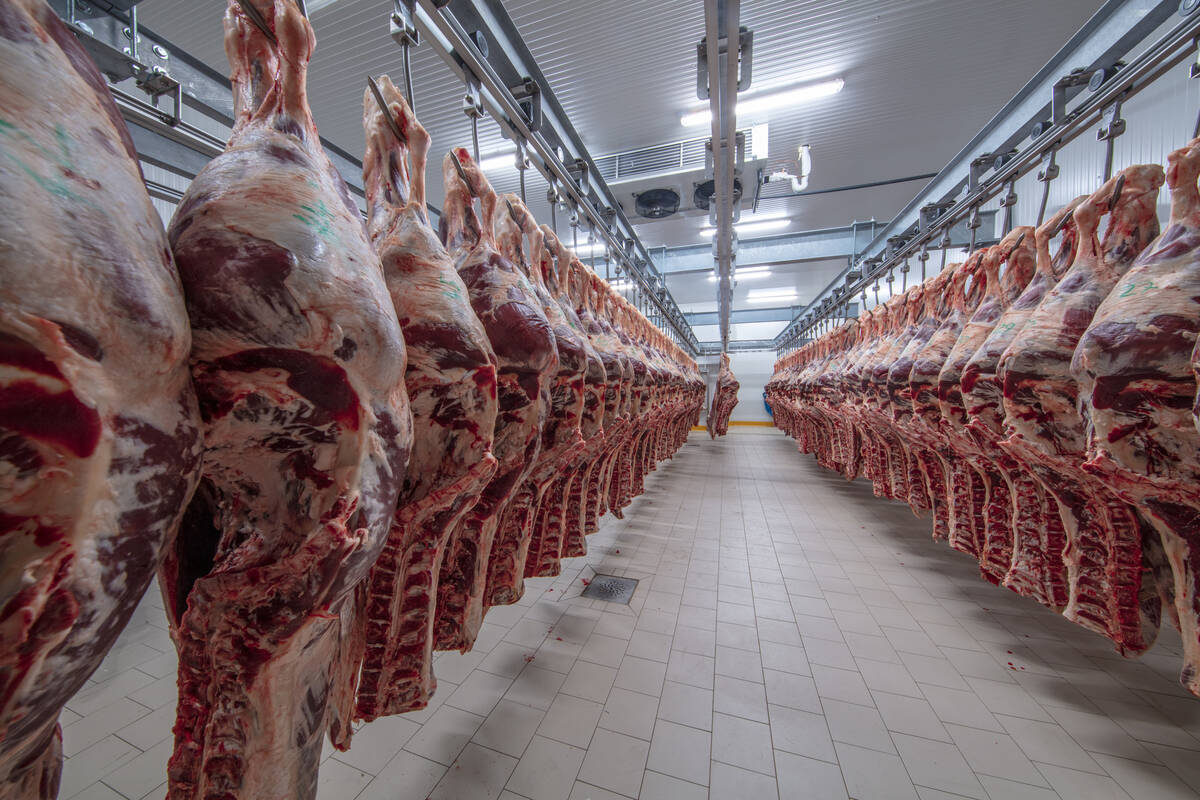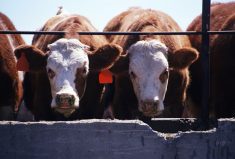Western Canadian feeder cattle markets became more established this past week as early yearling sales captivated major feedlot operators. Prices were relatively unchanged from week-ago levels; however, larger volumes confirmed the price structure. Higher-quality lower-flesh cattle were featured weighing 850 to 1,050 lbs. at most sales. Feedlots have plenty of pen space and with the healthy margins over the past six months, buyers shrugged off the weaker cattle futures and lower cash markets south of the border. Barley prices tumbled in southern Alberta late in the week while Alberta fed cattle prices managed to trade $1 to $2 higher. The environment was poised for higher values with all the pent-up demand, but it appeared most buyers were slowly stepping into the pool, testing the waters.
Read Also

U.S. livestock: Cattle make small gains, hogs fall
Chicago cattle futures made modest gains on Monday while hogs pulled back. Most-active February live cattle closed at 230.550 cents…
In central Alberta, a large group of black steers weighing just over 1,000 lbs. sold for $166 while 980-lb. Angus-cross steers sold for $171; Charolais-cross heifers averaging 935 lbs. sold for $168 in the same region. In east-central Saskatchewan, a group of Simmental-cross mixed steers weighing just over 800 lbs. reached up to $194. Arms of eastern Canadian buyers were starting to surface as well, reinforcing the market in eastern regions. In southern Alberta, markets were trading at a slight premium of $2 to as much as $5 compared to the rest of the Prairies. A few loads of larger-frame mixed tan steers weighing 1,000 lbs. touched $173 landed in the Lethbridge area.
Calves took second stage this week; prices were quite variable in the lighter weight categories with small groups on offer. Discounts were noted on unweaned and semi-weaned calves and the market was hard to define with lacklustre demand.
— Jerry Klassen manages the Canadian office of Swiss-based grain trader GAP SA Grains and Produits Ltd. and is president and founder of Resilient Capital, specializing in proprietary commodity futures trading and market analysis. Jerry consults with feedlots on risk management and writes a weekly cattle market commentary. He can be reached at 204-504-8339.















